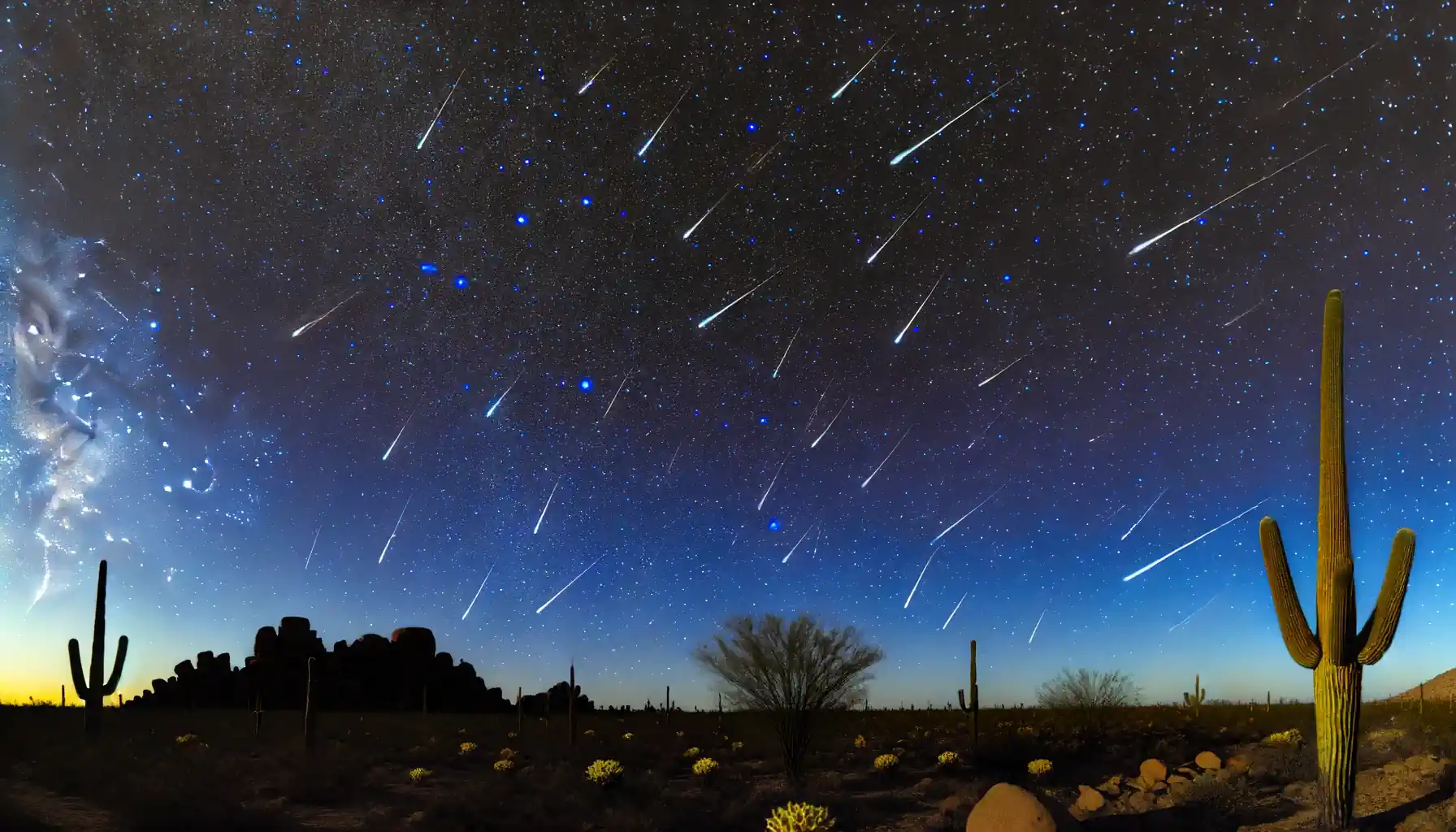
Best viewed: 29-30 July 2023
No one is quite sure which comet is responsible for the Delta Aquariids but that doesn’t stop them being a great meteor shower!
What is the Delta Aquariid meteor shower?
- Every year, the Earth goes once around the Sun. And every July, the Earth crashes into a cloud of debris left behind by an unknown comet. As the debris burns up in the Earth’s atmosphere, it produces the meteor shower that we call the Delta Aquariids.
- At its peak, the Delta Aquariids can produce 25 meteors per hour. However, they’re usually faint meteors without long trails and they rarely turn into a fireball.
Best Time to View the Delta Aquariid Meteor Shower in 2023
The optimal time to see the Delta Aquariid meteor shower in 2023 is in the early hours of Sunday, July 30th. Peak activity is around 3:30 am, but it’s best to start watching from 2:00 am.
This year, a full moon coincides with the peak, resulting in poor viewing conditions. Clear, dark skies are always preferable for meteor watching.
The Delta Aquariids are visible from July 12th to August 23rd, with the highest number of meteors occurring in the week surrounding the peak on July 30th.
How to See the Delta Aquariid Meteor Shower from the UK
You don’t need special equipment to observe the Delta Aquariid meteor shower from the UK, but some preparation can enhance your experience.
- Check the Weather: Look at the forecast. If cloudy, try watching on nights before or after the peak.
- Find a Dark Location: Select a safe, dark spot with an unobstructed view of the sky. Use a star map or app to locate Delta Aquarii in the Aquarius constellation, the radiant point for the Delta Aquariids. To see meteors with longer tails, look about 45 degrees to the left or right of the radiant.
- Adapt Your Eyes: Turn off all lights, including phones and torches, for 15 minutes to let your eyes adjust. If using a torch, consider one with a red filter.
- Stay Comfortable: Dress warmly and be comfortable, as the Delta Aquariids are best viewed in the early hours. Stay alert and enjoy the spectacle!
If you are planning to take pictures of meteors, Mary McIntyre has some very useful tips for you on how to take better meteor pictures.
Another great way to watch the Lyrids is to buy or build yourself a meteor camera. You’ll be able to create amazing time lapse videos like the one below and join the UK network of 200+ meteor cameras. You don’t need any previous experience and it’s a great project to do with your kids or students!
Fun facts about the Delta Aquariid meteor shower
- They’re called the Delta Aquariids because the meteors seem to come from the bright star Delta Aquarii in the constellation of Aquarius. However, they’re actually caused by the Earth crashing into debris left behind by an unknown comet.
- For many years, it was thought that the meteor shower originated from the breakup of the Marsden and Kracht sungrazing comets.
- More recently, astronomers have identified Comet 96P/Machholz as the likely source of the Delta Aquariids. This sungrazing comet takes just over 5 years to complete one orbit around the Sun.
- Sungrazing comets pass extremely close to the Sun, sometimes within a few thousand miles. This causes ice in the comet to vaporise and loosens small bits of rock and dust which can then result in meteor showers.
- Unlike most meteor showers, there’s no sharp peak for the Delta Aquariids. Instead, the best viewing period lasts for about a week around 30th July.